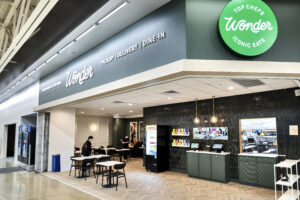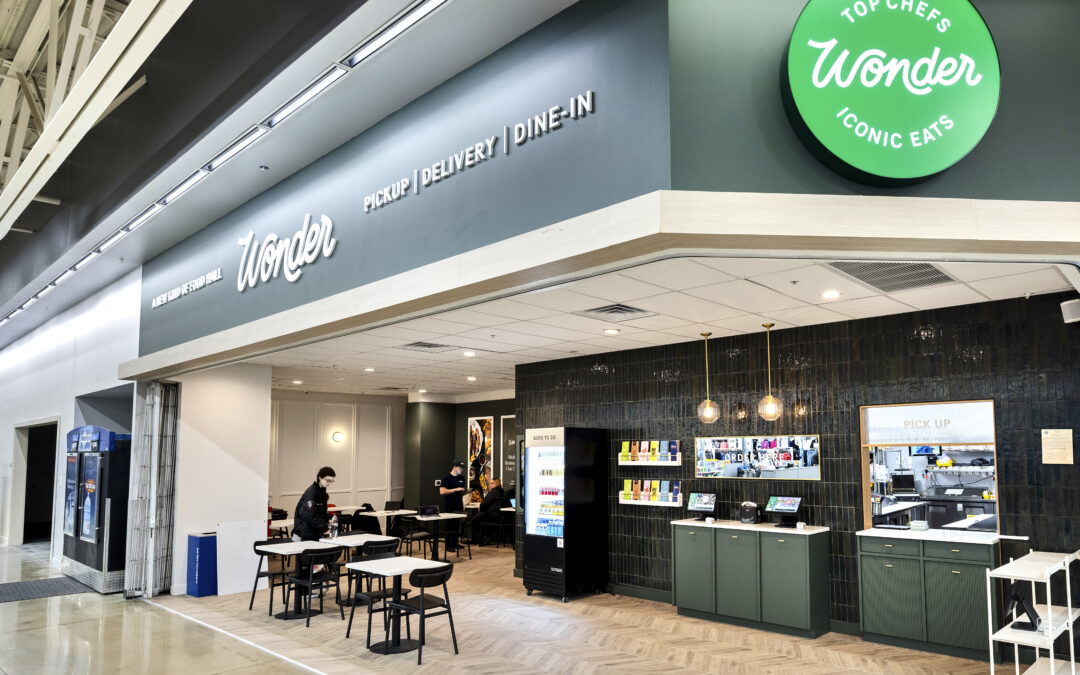Marc Lore is hooking up with Walmart again.
The former head of e-commerce for the retail giant is introducing his upscale food hall concept, Wonder, to four Walmart locations over the next few months.
The delivery and takeout-focused startup sells high-quality meals from top U.S. chefs and restaurants. Wonder operates its own fleet of couriers for deliveries, bypassing third-party delivery apps. Some of the company’s chef-driven meals feature Spanish cuisine by Jose Andres, Mediterranean food from Michael Symon, and barbecue specialties from the renowned Texas eatery, Tejas Barbecue.
The first Wonder food hall within Walmart opened in Feburary in Pennsylvania. Two additional locations are set to launch in May within Walmart stores in Teterboro and Ledgewood, New Jersey. A fourth location is being scouted as part of Wonder’s Walmart pilot program.
“The relationship between Walmart and Wonder is focused on the adaptability of our food-hall-style model, and Marc’s history with Walmart definitely helped us develop and launch this partnership,” Daniel Shlossman, Wonder’s chief growth and marketing office, told Food on Demand in an email. “We believe Wonder has product-market fit everywhere, so we will continue to discuss and seek out location opportunities throughout the Northeast.”

The first Wonder food hall within Walmart opened in February in Pennsylvania.
Securing a presence within Walmart marks a significant milestone for Wonder since shifting its business model over a year ago. The move exposes Wonder’s food brands to a “broader customer base” under Walmart, industry consultant Carl Orsbourn said in his latest episode of The Digital Restaurant podcast.
“The food industry is watching what they’re doing with quite a bit of intrigue,” Orsbourn said.
Ghost kitchens continue to evolve
Wonder’s expansion into Walmart highlights the ongoing evolution of ghost kitchens, with many transitioning into consumer-facing food halls for takeout and delivery.
Some are even abandoning physical locations altogether, such as Kitchen United. The Pasadena, California ghost kitchen recently closed its ghost kitchens inside Kroger-owned grocery stores and sold its New York-based locations to Nimbus.
Reef Technology has also scaled back its operations as restaurant chains like Wendy’s rethink their delivery-only strategies.

Wonder Founder and CEO Marc Lore
Wonder itself has undergone rapid evolution in the past year.
Initially, the startup prepared meals by chefs like Bobby Flay, Nancy Silverton, and Marcus Samuelsson in luxury vans parked outside customers’ homes in New Jersey. At the time, the startup had raised about $900 million in VC funds, according to the Wall Street Journal.
However, the fine dining-on-wheels venture proved inefficient to scale quickly.
So last year, Lore scrapped the vans in favor of serving meals for dine-in, delivery, and takeout from a fixed location. Lore said he can grow this model more quickly.
The first Wonder storefront opened last year in the Upper West Side using couriers on electric bikes. Since then, Wonder, which recently received a $100 million backing from Nestle, has opened 10 other locations in New York City, New Jersey, and Pennsylvania.
More are on the way as Lore is bullish about scaling rapidly.
“Over the next 22 months, there will be 90 locations. Pretty much every area you can imagine in the New York metro area,” Lore told Fox Business in a February interview. in a February interview.
Wonder controls every part of the operation – from food prep to delivery
Unlike traditional ghost kitchens, Wonder locations have tables with seating. But, the core business is geared for off-premise as the company has its own fleet of delivery couriers.
“Everything in our kitchen is built specifically to work great for delivery, but plenty of customers experience us via pickup or dine-in as well,” said Shlossman, who came to Wonder from Sweetgreen.
Wonder is vertically integrated, meaning it controls every operational aspect of the business—from food prep to delivery.
Meals are prepared at a central commissary, then assembled and cooked in TurboChef ovens at each individual storefront. Deliveries are made in 30 minutes. Two commissaries serve all 11 locations.

Unlike traditional ghost kitchens, Wonder locations have tables with seating.
Shlossman said this model is what makes Wonder “unique and differentiated” from a typical ghost kitchen.
“This high level of integration is what enables Wonder to make deliveries down to the exact moment orders are ready,” he said.
With its recent acquisition of meal kit provider Blue Apron, Wonder said it is “revolutionizing” the food industry by creating a “mealtime super app” that offers consumers elevated dishes from a variety of delivery-first restaurants and meal kits.
Blue Apron’s kits are available for on-demand delivery at 10 of Wonder’s 11 sites.
Shlossman teased that more meal options are coming soon.
“We look forward to announcing additional integrations and new features in the coming months,” he said.
Nancy Luna is a contributing writer for Food on Demand. She can be reached at [email protected]


